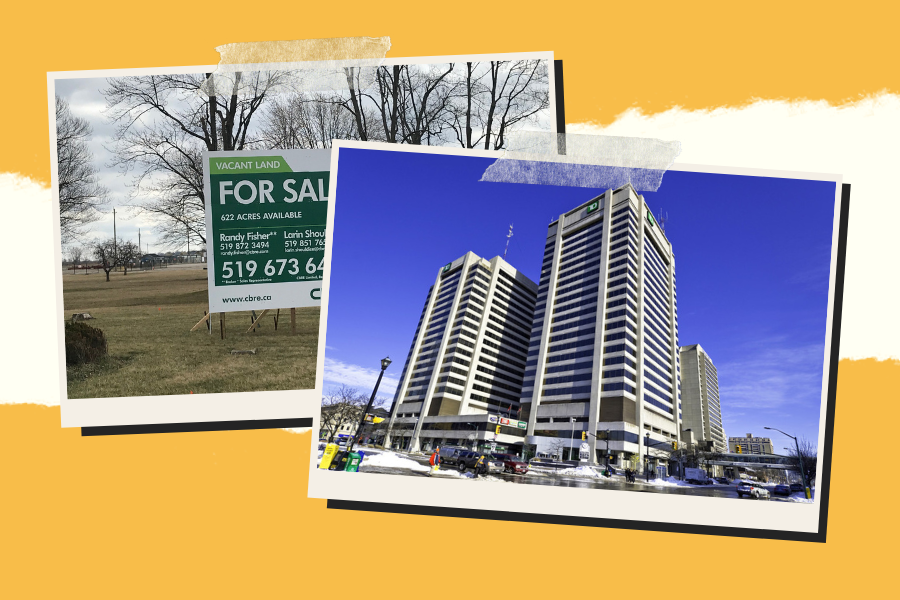A tale of two markets
A new CBRE Q1 report highlights the distinct and widening impact of the pandemic on London’s industrial and office sectors
OVER A YEAR into the pandemic, a new Q1 2021 office and industrial market report from CBRE is revealing two very drastic and distinct divisions between London’s office and industrial real estate markets.
On one hand, the industrial market is facing all-time-high demand from an increasing number of players and sectors.
“We are in pretty unchartered waters in the industrial market with a lack of available space and really strong demand,” explains CBRE managing director, Ted Overbaugh.
“Demand is at all-time highs with a combination of growing sectors ― like e-commerce, food-and-beverage manufacturing, cold storage, construction and building supplies ― and recent investments in the auto industry,” he continues. “We are seeing land selling at a feverish pace up and down the 400 series highways as both developers and users look to build and accommodate this growth. We are seeing really strong price movement on both land and existing buildings, but we still need more speculative industrial development to alleviate some of the pressure and allow tenants to move here and grow.”
Story Continues Below
On the other hand, more questions than answers remain for London’s office market, particularly for a battered downtown where rising vacancy rates and falling rates are being compounded by unknowns regarding just what the future of office work looks like.
“I think its inevitable that there will be a return to the office, but it will have to have more meaning, more flexibility and entice people back in” ―Ted Overbaugh
“The office market has faced its challenges as the recent stats indicate,” says Overbaugh.
“There are all kinds of mixed messaging and sentiment in the market in terms of what the office market will look like going forward and how people will work. At the end of the day, great companies need great culture. So, I think its inevitable that there will be a return to the office, but it will have to have more meaning, more flexibility and entice people back in. Change brings opportunity and employers who embrace this shift in the workplace will succeed, those that don’t recognize or embrace it will likely struggle.”
CBRE Key Trends: London Office Market Q1 2021
• The London office market continues to see reduced levels of touring and market survey requests in the core, and the vacancy rate has increased to 18.4%. On a by-Class basis, vacancy increased in both Class B and C by 350 bps and 490 bps, respectively, while Class A saw a slight decrease of 40 bps.
• Average asking rents are responding in kind and decreased in Class A and B by an average of $0.23 per sq. ft. in the core, meanwhile Class C experienced a slight increase of $0.28 per sq. ft.
• In the suburbs, the upward momentum in net rental rates seen since Q2 2020 has not been abated by the 60 bps increase in vacancy this quarter. Asking net rental rates for Class B properties, which account for over 70% of the suburban inventory, closed at an average $18.29 per sq. ft.
• Traditional office building tenants are now starting to consider retail and other commercial locations when rates make sense. There may be further movement out of downtown as tenants evaluate their future space needs and contemplate adjusting their footprint and location.
Story Continues Below
CBRE Key Trends: London Industrial Market Q1 2021
• The momentum seen in London’s industrial market throughout the second half of 2020 has carried through into Q1 2021. The market saw strong leasing activity as availability dropped 20 bps to 1.9%. At present, limited opportunities remain for large-format requirements with only five spaces greater than 75,000 sq. ft. available for lease or purchase.
• The shortage of leasable space will exacerbate in the year ahead as there will be little-to-no relief by way of new supply to keep pace with growing demand. Despite the 787,000 sq. ft. of space under construction, 638,000 sq. ft. is the new Maple Leaf Foods plant. Of the remaining construction activity, 67.2% is pre-leased, leaving only the 48,750 sq. ft. available at 2455 Innovation Drive.
• The land market has also seen a flurry of activity throughout the region as users and developers alike look to buy and build. This surge of activity should spur a strong pipeline of new industrial construction. However, with no speculative developments planned, low vacancy and supply constraints will remain an issue, hindering growth. ![]() Kieran Delamont
Kieran Delamont

